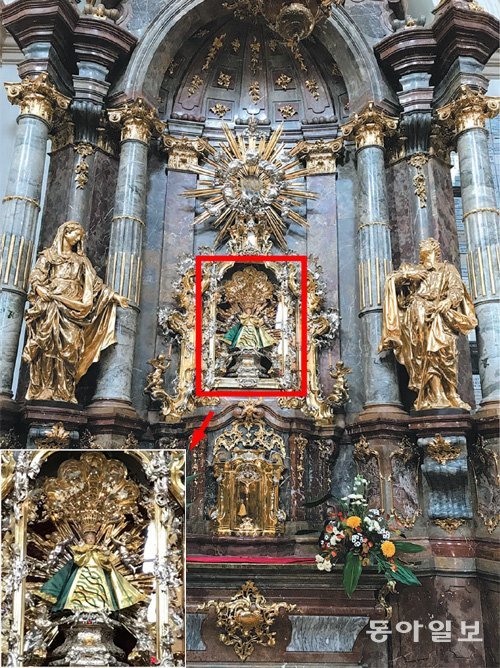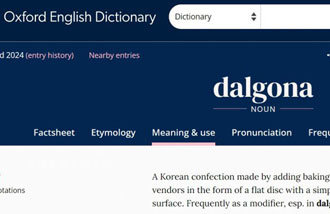Why Infant Jesus of Prague puts a smile on your face
Why Infant Jesus of Prague puts a smile on your face
Posted October. 11, 2019 07:40,
Updated October. 11, 2019 07:40

The pilgrims of the Czech Republic and Austria often get tired from excessive walk because there are simply too many places to visit. Walking around some major tourist spots alone will suffice for one to feel blessed. But at the end, one is confused as to what he has seen. The cathedral you’ve visited today might have been the same one from yesterday.
The location of the Infant Jesus of Prague is rather obscure. It is roughly four or five stations away by tram from the old town square, the center of tourism of the city. The Infant Jesus is hardly a must-visit spot unless you’re a devout Catholic. Once you get there, however, you’d be glad with your decision. The Korean dress displayed on the second floor is simply adorable. As it happened, the Infant Jesus changed the clothes when I arrived there.
What is it that inspires so much excitement about the baby Jesus? “Jesus demonstrated God's closeness and love through his child tenderness,” said Pope Benedict XVI about the appeal of the Prague Infant Jesus in 2009. “Judgment and sacrifice are noble, but the love of Jesus is more that. I think it is the pure and human face of a baby that attracts your attention,” said the head priest of Carmelite Monastery.
The two monasteries I visited in Austria were rather different. Both were imposing and loud as royal edifices typically are. Anticipation for contemplation or frugality, however, will easily be met with disappointment.
Melk Abbey, an abbey 79 kilometers away from Vienna, is particularly crowded. The Benedictine abbey is known to have inspired by Umberto Eco’s “The Name of the Rose.” It is even running a prestigious private school with some 900 students. The place is sparsely populated with ascetics while inundated with students and tourists.
Klosterneuburg Monastery founded by Leopold III is not so different. The place is reminiscent of a royal palace or a large museum. Both had a lot of sightseeing to offer, but to be honest, the most memorable part of the visit was the whiskey and wine brewed in the monasteries.
Such “openness” is a virtue that should never be slighted; admittedly, there would be no much point in finding enlightenment behind closed doors. Klosterneuburg Monastery spends more than 10% of its wine profits on social programs. It also organizes the St. Leopold Peace Prize to sponsor young artists. Religions thrive on openness.
Yang-Hwan Jung ray@donga.com
Headline News
- Pyongyang test-fires new hypersonic IRBM with longest flight range
- NVIDIA CEO: ‘ChatGPT moment for general robotics just around the corner’
- President security service chief refuses second summons
- NVIDIA CEO: ‘ChatGPT moment for general robotics just around the corner’
- N. Korea fires intermediate-range ballistic missile







